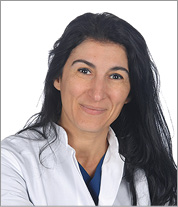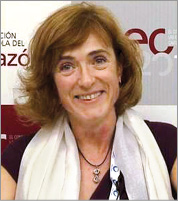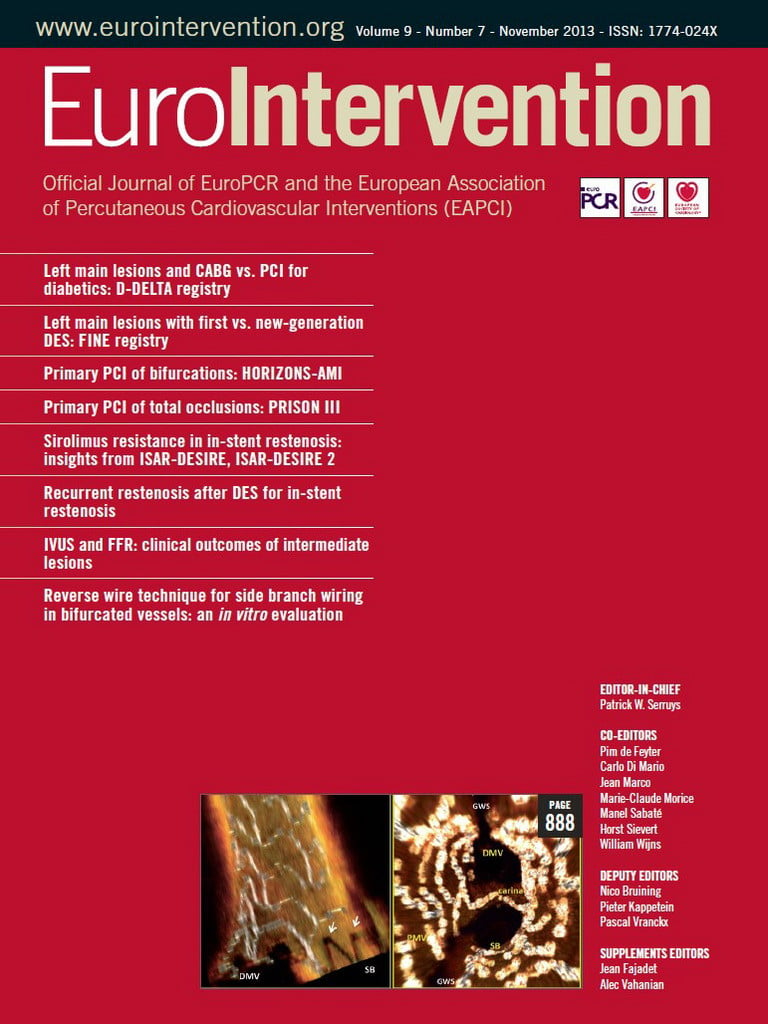NEWS
■ Are you an Interventionalist under 36? Apply to the EAPCI Training and Research Grants programme 2014 before 15 January 2014! Grant awards of 25,000€.
■ It’s not too late to register and attend the upcoming EAPCI European Fellows Course. New Frontiers in Interventional Cardiology workshop (NFIC) is an annual international gathering of cardiologists, cardiac surgeons as well as specialists in angiology and radiology. It takes place in Krakow, Poland the 27th and 28th of November.
■ EAPCI Board Elections: call for candidates for the positions of President-Elect, Secretary and Treasurer will open soon. Start lobbying your National Society or Working Group and join EAPCI to be eligible to vote!
Introducing WOMEN: the new EAPCI committee
CO-CHAIRS

Julinda Mehilli, MD, FESC
Munich University Clinic, Ludwig-Maximilian University, Munich, Germany

Josepa Mauri, MD, PhD, FESC
Cardiology Department, Hospital Germans Trias i Pujol, Badalona, Spain
Can you introduce your new EAPCI committee?
The WOMEN committee is the new EAPCI community dedicated to women both as interventional cardiologists and as cardiac patients; raising awareness of the role of women in our profession and underlining the fact that cardiovascular disease is the leading cause of death in women today.
The vision of our WOMEN group is that by understanding gender-related disparities we can attain gender equality in interventional cardiology.
We are focused on women as interventional cardiologists and our MISSION is to increase the visibility and the active role of women within the interventional community.
To do this we must provide networking opportunities for women, ensuring their active participation in the activities of the ESC, the EAPCI, National Societies and Working Groups, promoting female representation in leading positions within the National Societies and the ESC, and increasing the overall number of female interventional cardiologists.
We also need to increase the active participation of female interventionalists in steering committees and writing committees of clinical trials and guidelines, encourage female physicians to choose an interventional cardiology career following the example of our leading women interventionalists today, and help women to achieve equal career opportunities.
Another important focus of WOMEN is women as cardiac patients. Our goals here are twofold. First, to reduce the time women take in seeking care after symptom onset we need to increase awareness about the importance of coronary artery disease in women, informing them about how it presents clinically. Second, to fight against the undertreatment of female cardiac patients, we need to increase awareness among treating physicians that the higher mortality rates observed in female patients as compared to their male counterparts are mostly based on gender disparities related to access to care. This is true particularly in the less frequent use of guideline-recommended invasive diagnostic and therapeutic procedures as well as life-saving medical treatments in women.
To do this we need, to increase the awareness of the entire interventional and research community about gender-related disparities in diagnosis and treatment of cardiac patients, support the systematic enrolment of women in clinical trials and ensure the consideration of women in all aspects of scientific literature –whether in clinical trials, guidelines or regulatory processes– and develop educational programmes on gender-based issues in interventional cardiology. This role of education and information is critical in effectively reducing –and eventually abolishing– the undertreatment of female cardiac patients still present, although in differing degrees, within the European community.
Dr Fajadet mentions that few women studying medicine today choose to be interventional cardiologists. Why do you think this has happened? What concerns might women have about entering this specialty?
Indeed, despite the fact that more than half of our medical students are women, a minority of them –18%– choose cardiology as a specialty, and fewer than 8% become interventional cardiologists. Women are fewer likely to apply for invasive subspecialties, mostly due to the difficulties in coordinating work and family life, particularly with regard to childcare. Training in invasive cardiology is long and the working pattern is unpredictable. Long working hours and 24-hour on-call duties require high flexibility which is difficult to imagine for the young mother. Another reason is concern about radiation exposure in catheterisation laboratories, particularly during pregnancy. In addition, there are very few women in leading positions in invasive cardiology. According to a survey by the Italian Society of Cardiology only 6% of catheterisation laboratories in Italy have women directors. This means that young female physicians are not seeing positive role models and not having access to female mentors. Moreover, becoming an interventional cardiologist is an important and necessary step to a career in leadership positions in cardiology (which are traditionally taken by men). Even in interventional cardiology, there is a hierarchy built up from the diagnostic role to the therapy of coronary and structural heart disease. Thus female physicians are, in addition, afraid of being considered only the “worker bees in the cathlab”, while their male colleagues work on their careers.
How does creating a new committee for women within the framework of the EAPCI advance your goals and mission?
One way we can reach our goals is through a close cooperation with other EAPCI committees. For example, since our aim is to reach young female physicians we will work closely with the YOUNG community of interventionalists. We plan to organise common courses to increase awareness within the community about the needs and difficulties that young women face on their way to becoming interventional cardiologists, as well as identifying the ways we can solve these issues. For a young female physician in training in interventional cardiology it is important not only to find a high-volume centre but to find a high-volume centre with additional facilities for her family.
In practical terms, we will organise our courses during the EuroPCR and ESC meetings focusing on different aspects of interventional cardiology, including the gender-related issues we mentioned above.
In addition, we are preparing the WOMEN homepage on the EAPCI website.
EuroIntervention published several articles from the Women in Innovations (WIN) initiative. How does the WOMEN committee of the EAPCI differ from this?
The EAPCI WOMEN members come from different ESC and EAPCI member countries where WOMEN will focus on building up professional platforms and research networking on local, national and European levels. The WIN initiative has a more international character with members from USA, Europe, China, Japan, etc.
How has the treatment of women in relation to cardiovascular disease evolved in recent years?
After several national campaigns that took place throughout the world such as the Can Rapid Risk Stratification of Unstable Angina Patients Suppress Adverse Outcomes with Early Implementation (CRUSADE), the National Cardiovascular Data Registry Acute Coronary Treatment and Intervention Outcomes Network – Get With The Guidelines (NCDR ACTION Registry-GWTG) and the HELP campaign of the Swiss Heart Foundation, women still do not have the necessary information about the symptoms of coronary artery disease or about the importance of seeking care directly after symptom onset. It seems that traditional campaigns, while well targeted for men, do not address women’s concerns. On the other hand, the large body of scientific evidence generated in the last 20 years contributes to a better treatment of women with coronary artery disease, particularly when they present with acute coronary syndrome. In many countries in the Western world, the treatment gap between women and men, is narrowing. We are far from our goal, however, since the gender bias in access to care is still present in varying degrees within different European countries.

